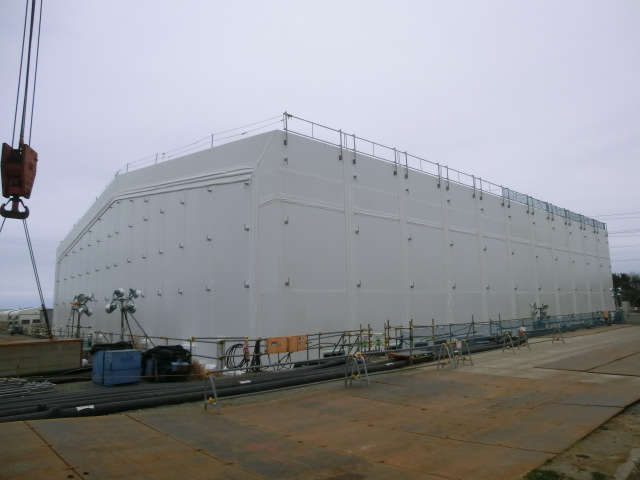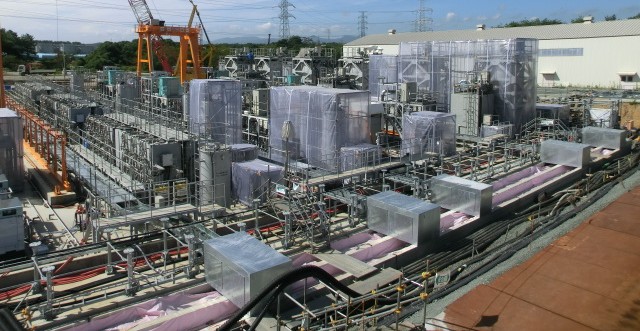The No-Name European Committee That Made the $13 Billion Guarantee to Cypriot Banks
The Eurogroup held a teleconference this evening to take stock of the situation in Cyprus.
The eurozone's decision-making institution on the euro is an informal committee of finance ministers. The committee has no official name. It has no official power. It is not voted into office.
In the Lisbon Treaty, which went into effect on January 1, 2009, this no-name informal committee at last got its legal status.
Article 1: The Ministers of the Member States whose currency is the euro shall meet informally. Such meetings shall take place, when necessary, to discuss questions related to the specific responsibilities they share with regard to the single currency. The Commission shall take part in the meetings. The European Central Bank shall be invited to take part in such meetings, which shall be prepared by the representatives of the Ministers with responsibility for finance of the Member States whose currency is the euro and of the Commission.
Article 2: The Ministers of the Member States whose currency is the euro shall elect a president for two and a half years, by a majority of those Member States.
http://en.wikipedia.org/wiki/Euro_Group
So, it meets informally. It discusses questions. The Commission takes part. (How? With what authority? With how many votes?) The ECB is invited. It does not have a vote.
The president of the no-name committee has a name no one can pronounce unless he is Dutch, Jeroen Dijsselbloem. (http://en.wikipedia.org/wiki/Jeroen_Dijsselbloem)
Yet this no-name Committee promised Cyprus banks $13 billion worth of euros over the weekend, on its own authority, and answerable to no one in any European parliament, including the European Union.
This is called democracy in Europe. In Europe, democracy means: "You dumb clucks."
The bailout required the government of Cyprus to impose a capital tax on all bank accounts.
This was announced on Monday by the newly elected President of Cyprus. The voters of Cyprus went ballistic. The President of Cyprus had sworn to the people in his inauguration address on February 28 that he would never, ever do this.
Translation: "You dumb clucks."
The Parliament of Cyprus has thrown a spammer into the works. It has refused to impose the tax. What's this? It's democracy. The real kind.
The president of the no-name informal committee, which is informally called the "Euro Group," has issued a statement. It is unsigned. (No one can pronounce it, so who cares?) He is appalled at this betrayal by the parliament of Cyprus. This was a secret deal, and secret deals are supposed to be agreed to by Parliaments. Parliaments are supposed to be rubber stamps. Who does the bunch of stooges think they are, anyway?
I reproduce this announcement verbatim from the website of the so-called Euro Group. I also provide a translation.
I recall that the political agreement reached on 16 March on the cornerstones of the adjustment programme and the financing envelope for Cyprus reflects the consensus reached by the Cypriot government with the Eurogroup.
Because the meeting was held in secret, there were no official notes. You will have to trust my memory. The group met with the someone or other -- I cannot recall who -- who said he represented the government of Cyprus.
The implementation of the reform measures included in the draft programme is the best guarantee for a more prosperous future for Cyprus and its citizens, through a viable financial sector, sound public finances and sustainable economic growth.
The parliament of Cyprus should rubber stamp this deal. It is best for Cyprus citizens. Pay no attention to those crowds in front of the Parliament shouting "no!"
I reiterate that the stability levy on deposits is a one-off measure.
No body in the Eurozone outside of the no-name group with no official power has approved any of this. It has never happened before. It will never happen again. Trust me.
This measure will - together with the international financial support - be used to restore the viability of the Cypriot banking system and hence, safeguard financial stability in Cyprus. In the absence of this measure, Cyprus would have faced scenarios that would have left deposit holders significantly worse off.
No one in power told the voters of Cyprus that its banking system was close to collapse. But I am, now that someone or other representing the government of Cyprus agreed to it.
The Eurogroup continues to be of the view that small depositors should be treated differently from large depositors and reaffirms the importance of fully guaranteeing deposits below EUR 100.000. The Cypriot authorities will introduce more progressivity in the one-off levy compared to what was agreed on 16 March, provided that it continues yielding the targeted reduction of the financing envelope and, hence, not impact the overall amount of financial assistance up to EUR 10bn.
The Cypriot authorities will do this because we say so. They have cooperated so far by stealing the people's money over the weekend, in preparation for the heist on Monday.
The Eurogroup takes note of the authorities' decision to declare a temporary bank holiday in Cyprus on 19-20 March 2013 to safeguard the stability of the financial sector, and urges a swift decision by the Cypriot authorities and parliament to rapidly implement the agreed measures.
Our no-name committee speaks for all of the member nations of the eurozone.
The euro area Member States stand ready to assist Cyprus in its reform efforts on the basis of the agreed adjustment programme.
The voters who will fork over the money to bail out the banks of Cyprus are 100% behind this. Trust me.
That ended the press release:
http://eurozone.europa.eu/newsroom/news/2013/03/peg-statement-cyprus-18-03-13
This is the foundation for a never-ending crisis in the eurozone. This is business as usual.
Here is the no-name president of the no-name committee which pledged the money to bail out the banks of Cyprus. Let me translate. "There is no problem here. There is nothing to see here. Move along."
















 Tokyo Time
Tokyo Time
![[Most Recent Quotes from www.kitco.com]](http://www.kitconet.com/charts/metals/gold/t24_au_en_usoz_2.gif)

